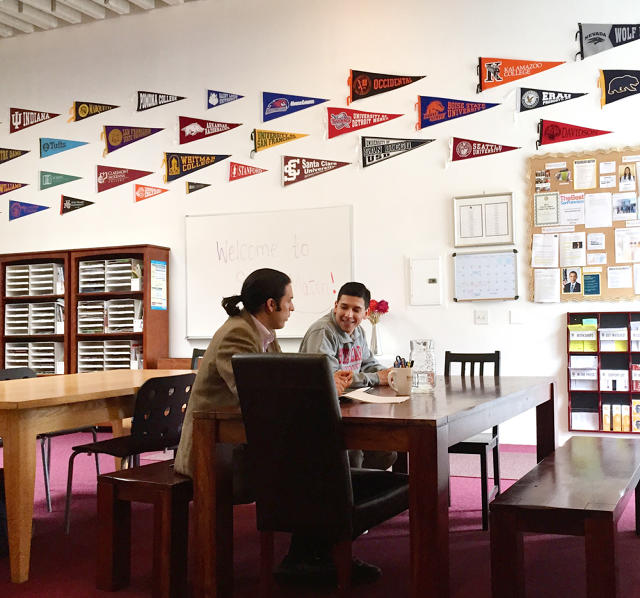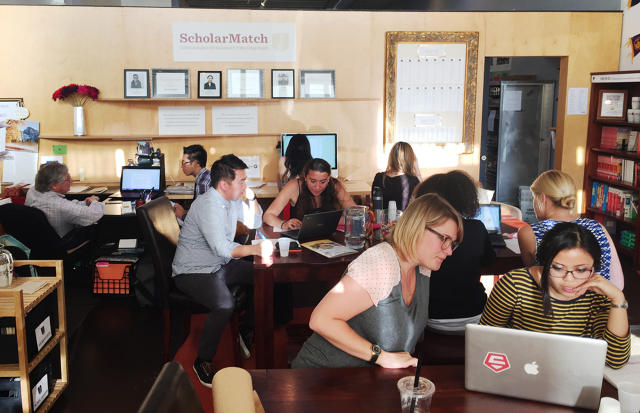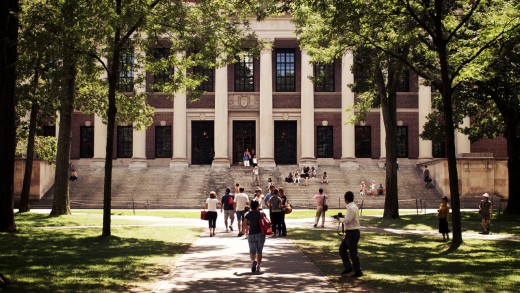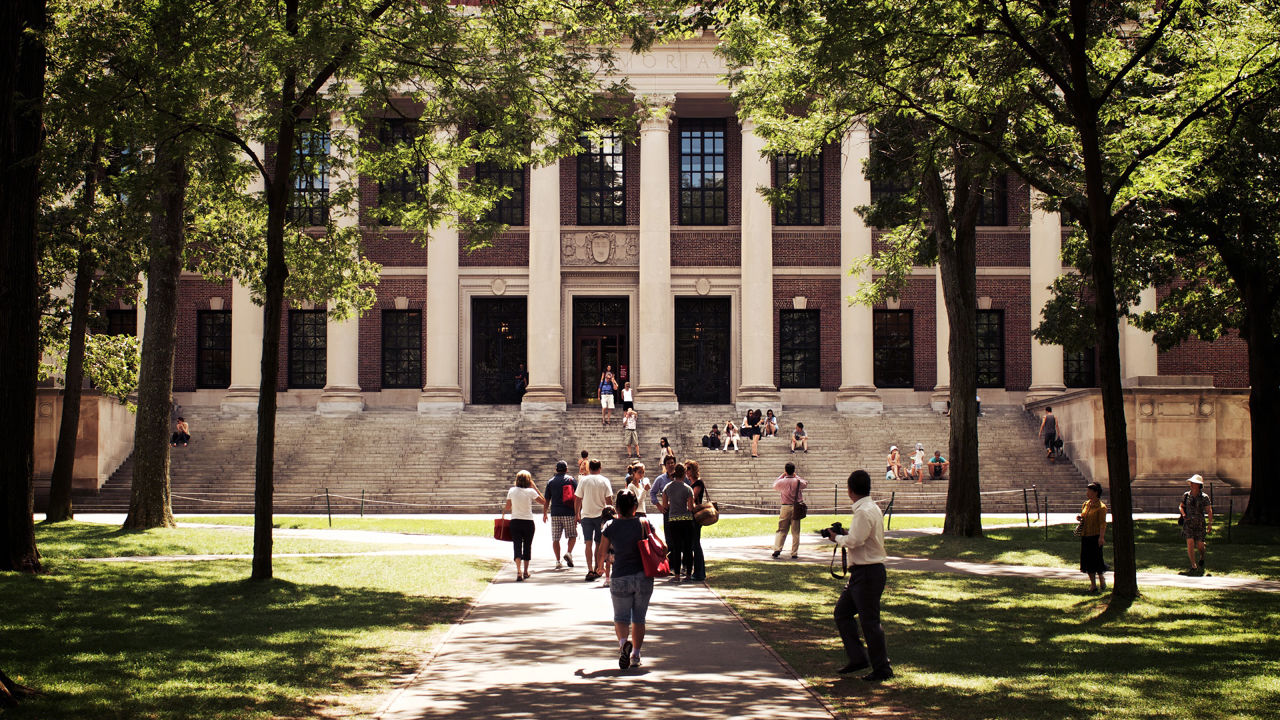Dave Eggers Wants To Help Low-Income Students Discover Their Dream Schools
With ScholarMatcher, students can search for colleges with strong academics and fair financial aid.
Author Dave Eggers taught a high school course on “The Best American Nonrequired Reading” (also a popular anthology) for over a decade. Each year, the same pattern would repeat: He’d write college letters of recommendation, watch as students were accepted to well-regarded schools, and then hear stories of their struggles with overwhelming levels of debt. Opaque language, predatory practices—”They’d figure it out too late,” he says.
To reduce the burden of those loans, Eggers founded nonprofit ScholarMatch in 2010. He took inspiration from crowdfunding platforms like Kickstarter, envisioning a website where donors would be able to read students’ stories and support them financially. The organization has made good on that promise. By this fall, it will have paid out nearly $1 million in scholarships.
But that patina of success obscured the central challenge facing ScholarMatch: Its inability to scale. Early on in her tenure, executive director Diana Adamson realized that she needed to provide services in tandem with dollars. “As much as the students needed money, they needed guidance, and sometimes even more so,” she says. As she hired San Francisco-based program staff and built relationships school by school, she wondered if she would ever be able to serve students on a different order of magnitude.

Then, last summer, Adamson had an idea for a new tool, which would help students explore colleges by aggregating data about aid, academic quality, student support, and postgraduate success. She called it ScholarMatcher, and launched it earlier this month.
“There are post-secondary options for every single student,” says Brian Fox, community school coordinator at Mission High School, a ScholarMatch partner. The obstacle for many students starting their search, he says, is that “it’s hard to know where to go.”
ScholarMatcher aspires to be that destination, connecting low-income students with institutions that are providing high-quality educations at (relatively) reasonable prices. By design, the tool does not rank schools. It does, however, filter out for-profit schools, plus over a thousand nonprofit schools that failed to meet ScholarMatch’s baseline criteria.
“The scoring is kind of tough, but I think that’s how it should be,” says Adamson, who majored in math at Notre Dame. She analyzed data points including net price, retention, and early career earnings in order to develop the tool’s composite ratings.

The result is a searchable database with 296 colleges and universities, all of which have the equivalent of a B- average or better on the tool’s GPA-style scale. The University of Illinois at Urbana-Champaign, for example—which Eggers attended—made the cut, with a 3.0 in financial aid, a 3.5 in academics, a 3.0 in student support, and a 3.3 in postgraduate success. (Schools like Babson College, which score poorly on financial aid but average B or higher on everything else, are also included on the list—a nod to the role of outside scholarships.)
The tool isn’t perfect. The data sources and analysis behind the scores should be more transparent, and the site should be easier to navigate, particularly on mobile. But for the thousands of high school seniors starting to think about applying to college, it may be good enough. ScholarMatch plans to introduce new features and a mobile app later this year, pending funding.
“Low-income students tend to apply to only one or two schools, often the local school. Sometimes that school is amazing, and sometimes it’s not. They need a way to think beyond the local school, a way that’s not intimidating,” Adamson says. “Our whole goal was to help students pick from a list of schools that are good for them.”
ScholarMatch scholarship recipient Jessica Cheung says she would have benefitted from such a tool. The California native arrived at Fordham University four years ago, and soon felt that she had made a mistake. “I wanted to go to a school in the city,” she says. “In the movies, New York is the place where you succeed in your career and fall in love.”

But the bubble of that teenage dream burst during her first semester. Cheung felt the school prioritized non-academic opportunities like “exploring the city or having an internship,” she says. Plus, she began to realize the true weight of the loans in her financial aid package. “I didn’t really know what it would mean to take out these loans—I was 17.”
Determined to transfer, Cheung approached ScholarMatch. “I was stuck,” Cheung says. “My mom is from China, and I try not to stress her out with this stuff. But I needed people to help guide me through that process.”
“We sell [the message] to kids, you have to go to college, college is your future,” Adamson says. “I stand behind on all those statements. But what’s unrealistic is that no one ever says, college could be the biggest financial decision you make in your life, and you’re doing it at 17 without a lot of help.”
With guidance from Adamson and her team, Cheung discovered liberal arts colleges, a natural fit for her interest in journalism, and poured her hopes and fears into over a dozen transfer applications. In the end she won a place in the sophomore class at Middlebury College in Vermont, and a far more generous aid package, supplemented with funding from ScholarMatch donors.
Cheung’s story closes on a high note: She recently graduated with what she calls a “manageable” debt load, and plans to join NBC as a news associate in September. But first-generation college students with similar backgrounds typically end up at local institutions with poor track records. Many fail to graduate, and even those who do face crippling levels of debt.
That problem has taken on new urgency in light of recent headlines, from student loan debt’s drag on the economy to blow-ups like Corinthian College’s bankruptcy.
The system “needs a vast overhaul,” Eggers says. “But in the meantime, there are a lot of schools doing great work, and we want to highlight this.”
Fast Company , Read Full Story
(139)














